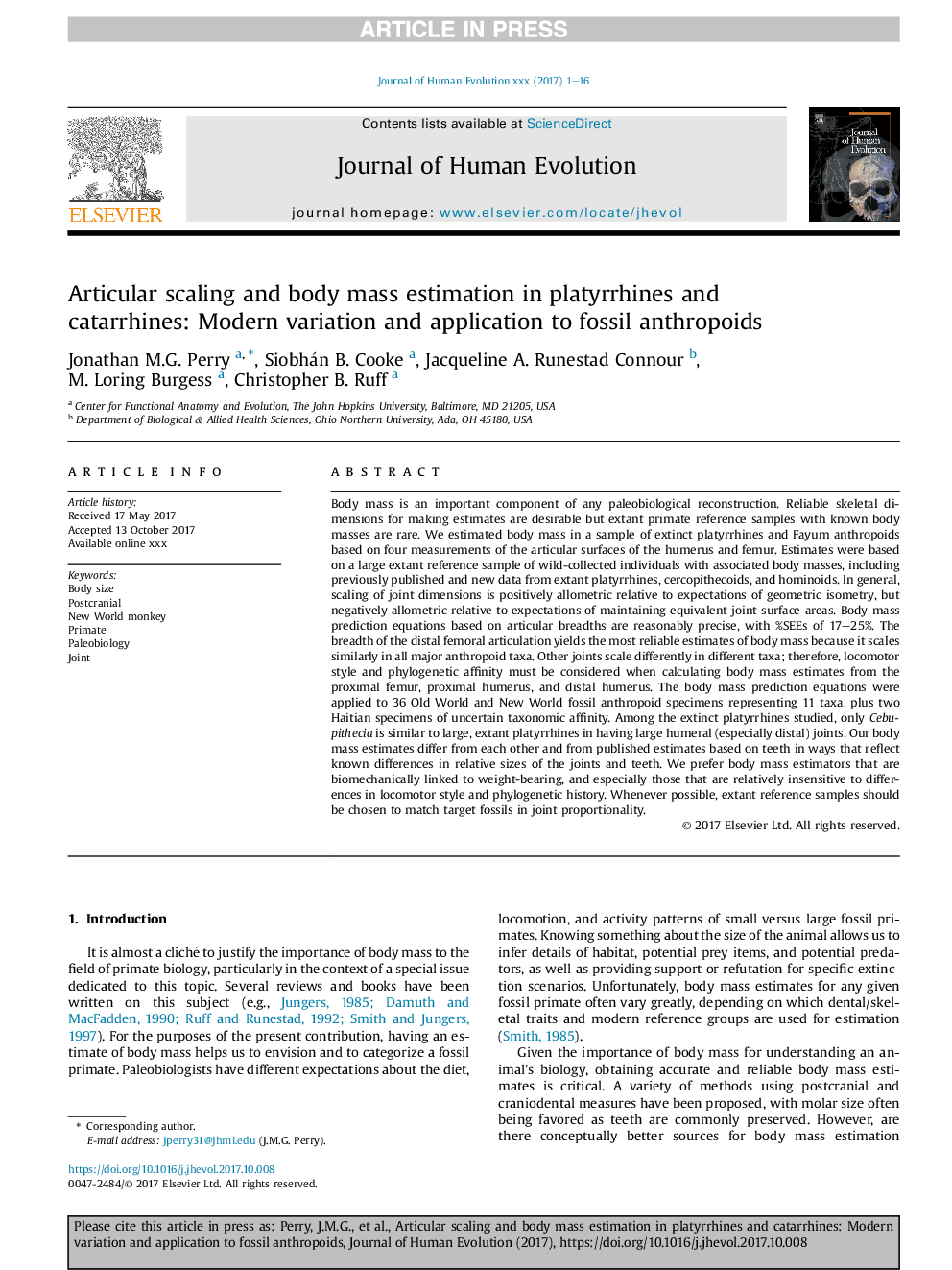| کد مقاله | کد نشریه | سال انتشار | مقاله انگلیسی | نسخه تمام متن |
|---|---|---|---|---|
| 8887313 | 1628134 | 2018 | 16 صفحه PDF | دانلود رایگان |
عنوان انگلیسی مقاله ISI
Articular scaling and body mass estimation in platyrrhines and catarrhines: Modern variation and application to fossil anthropoids
ترجمه فارسی عنوان
مقیاس مفصلی و توزیع جرم بدن در پتریری ها و کادورین ها: تغییرات مدرن و کاربرد آن در انسان های
دانلود مقاله + سفارش ترجمه
دانلود مقاله ISI انگلیسی
رایگان برای ایرانیان
کلمات کلیدی
اندازه بدن، پس از قاعدگی، میمون جهانی جدید، پرستار، پالیبیبولوژی، مشترک
موضوعات مرتبط
علوم زیستی و بیوفناوری
علوم کشاورزی و بیولوژیک
بوم شناسی، تکامل، رفتار و سامانه شناسی
چکیده انگلیسی
Body mass is an important component of any paleobiological reconstruction. Reliable skeletal dimensions for making estimates are desirable but extant primate reference samples with known body masses are rare. We estimated body mass in a sample of extinct platyrrhines and Fayum anthropoids based on four measurements of the articular surfaces of the humerus and femur. Estimates were based on a large extant reference sample of wild-collected individuals with associated body masses, including previously published and new data from extant platyrrhines, cercopithecoids, and hominoids. In general, scaling of joint dimensions is positively allometric relative to expectations of geometric isometry, but negatively allometric relative to expectations of maintaining equivalent joint surface areas. Body mass prediction equations based on articular breadths are reasonably precise, with %SEEs of 17-25%. The breadth of the distal femoral articulation yields the most reliable estimates of body mass because it scales similarly in all major anthropoid taxa. Other joints scale differently in different taxa; therefore, locomotor style and phylogenetic affinity must be considered when calculating body mass estimates from the proximal femur, proximal humerus, and distal humerus. The body mass prediction equations were applied to 36 Old World and New World fossil anthropoid specimens representing 11 taxa, plus two Haitian specimens of uncertain taxonomic affinity. Among the extinct platyrrhines studied, only Cebupithecia is similar to large, extant platyrrhines in having large humeral (especially distal) joints. Our body mass estimates differ from each other and from published estimates based on teeth in ways that reflect known differences in relative sizes of the joints and teeth. We prefer body mass estimators that are biomechanically linked to weight-bearing, and especially those that are relatively insensitive to differences in locomotor style and phylogenetic history. Whenever possible, extant reference samples should be chosen to match target fossils in joint proportionality.
ناشر
Database: Elsevier - ScienceDirect (ساینس دایرکت)
Journal: Journal of Human Evolution - Volume 115, February 2018, Pages 20-35
Journal: Journal of Human Evolution - Volume 115, February 2018, Pages 20-35
نویسندگان
Jonathan M.G. Perry, Siobhán B. Cooke, Jacqueline A. Runestad Connour, M. Loring Burgess, Christopher B. Ruff,
